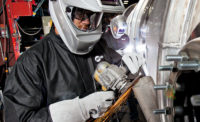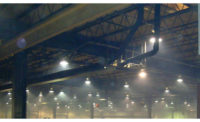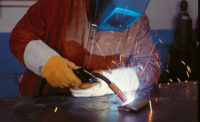History
OSHA’s standards for welding, cutting and brazing in general industry and construction were based on the 1967 ANSI standard Z49.1.
Why this standard is important
Welding, cutting and brazing are hazardous activities that pose a unique combination of both safety and health risks to more than 500,000 workers in a wide variety of industries. The risk from fatal injuries alone is more than four deaths per thousand workers over a working lifetime.
Hazards
Health hazards from welding, cutting, and brazing operations include exposures to metal fumes and to UV radiation. Safety hazards from these operations include burns, eye damage, electrical shock, cuts, and crushed toes and fingers. Many of these can be controlled with proper work practices and PPE.
Enforcement Statistics:
October 2015 through September 2016 – totals for all industries
Citations: 145
Inspections: 119
Penalty: $369,553
Most Frequently Cited Provisions
- If the object to be welded or cut cannot be moved and if all the fire hazards cannot be removed, then guards shall be used to confine the heat, sparks, and slag, and to protect the immovable fire hazards.
- Wherever there are floor openings or cracks in the flooring that cannot be closed, precautions shall be taken so that no readily combustible materials on the floor below will be exposed to sparks which might drop through the floor. The same precautions shall be observed with regard to cracks or holes in walls, open doorways and open or broken windows.
- When arc welding is to be suspended for any substantial period of time, such as during lunch or overnight, all electrodes shall be removed from the holders and the holders carefully located so that accidental contact cannot occur and the machine be disconnected from the power source.
Most cited industries
- Fabricated Metal Product Manufacturing
- Machinery Manufacturing
- Transportation Equipment Manufacturing
- Electrical Equipment, Appliance, and Component Manufacturing
- Merchant Wholesalers, Durable Goods
- Specialty Trade Contractors
- Primary Metal Manufacturing
- Support Activities for Mining
- Motor Vehicle and Parts Dealers
- Miscellaneous Manufacturing
What must employers do to protect employees?
Welders should understand the hazards of the materials they are working with. OSHA’s Hazard Communication standard requires employers to provide information and training for workers on hazardous materials in the workplace. Welding surfaces should be cleaned of any coating that could potentially create toxic exposure, such as solvent residue and paint. Workers should be positioned to avoid breathing welding fume and gases. For protection from radiant energy, workers must use PPE, such as safety glasses, goggles, welding helmets or welding face shields.
Key Letter of Interpretation
OSHA's welding, cutting, and brazing standard, 29 C.F.R. §1910.252(b)(3), outlines specific PPE requirements for welders. This provision states that employees exposed to the hazards created by welding, cutting, or brazing operations must be protected by PPE in accordance with the requirements of the general personal protective equipment standard, §1910.132. The welding standard also states that "[a]ppropriate protective clothing required for any welding will vary with the size, nature and location of the work to be performed." Therefore, if welders are exposed to flash fires or short-duration flame exposures, OSHA expects that employers would provide and ensure the use of FRC to protect workers from these hazards.
Compliance Assistance
Eye Protection against Radiant Energy during Welding and Cutting in Shipyard Employment. OSHA Fact Sheet, (2012, January). Discusses protection from radiant energy and the requirements for workers to use personal protective equipment.
Controlling Hazardous Fume and Gases during Welding. OSHA Fact Sheet FS-3647, (2013).



